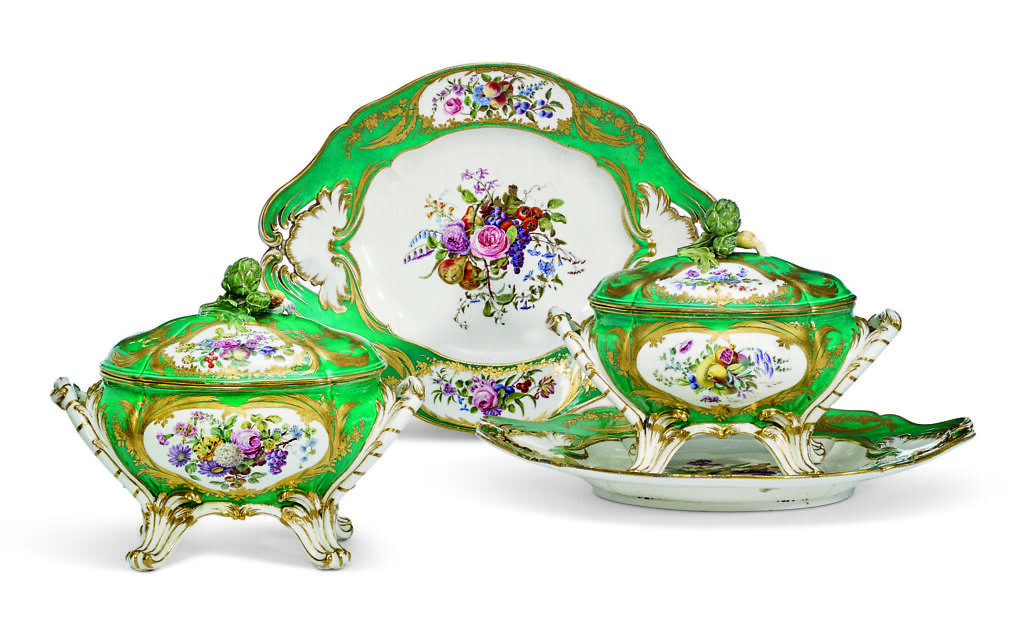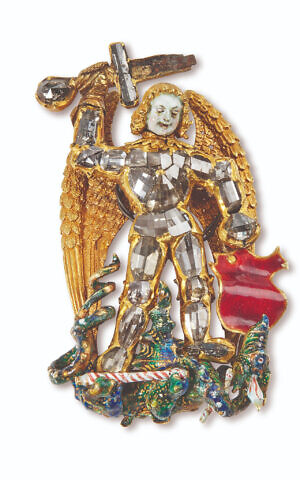From The Times of Israel:
This quality and taste is known as le goût Rothschild, which combines the best of global curiosities, French decorative arts, and Old Master paintings to create a home of sophistication and comfort. This approach to collecting and décor was inspired by the houses of the German princes of the Renaissance.
“[The Rothschilds] would lavishly display their collections in luxurious and impressive yet comfortable houses,” wrote Paul Gallois, head of European Furniture at Christie’s in London.
“Yet their goût shouldn’t be defined by extravagance. It’s mainly about the identification of the best works of art at the highest level within historical and cultural contexts,” he emphasized.
The auction is divided into four sub-auctions, three live and one online. The 589 lots represent acquisitions by the Rothschilds from the late 18th century through the 20th century. There is something that will catch every eye, from jewelry to paintings to furniture to tableware — and much more. (Read more.)
From Christie's:
When James expanded the family’s banking empire, de Rothschild Frères, to France in the early 19th century, he swiftly became a powerful figure in the country. His influence grew as he established the firm as leading banker to the French state, financed the construction of railways and mines and invested in outside trades like wine and tea. Over time, his business savvy made him one of the richest men in the world.
Unfettered in what they could buy, James and Betty amassed a collection that underscored their luxurious way of life. ‘Here we have a family who had made, in two to three generations, the biggest fortune in Europe,’ says Jonathan Rendell, Deputy Chairman at Christie's Americas. ‘They were not just wealthy, they were a political force. Their collection reflects a family who saw themselves as equals of the great merchant princes of Italy and the various German royal families.’
James’s ambitions were reflected in the splendour of his many properties. The one most emblematic of his status was Château de Ferrières, a sprawling estate east of Paris. Designed by the architect Joseph Paxton, known for the Crystal Palace in London, Ferrières was a lavish manor rendered in the Neo-Renaissance style. It boasted eighteen suites of apartments on the second floor, an opulent front hall inspired by the Doge’s Palace in Venice and a railway that brought food from the kitchen to the dining hall. Throughout the château’s many rooms were objects from the family’s ever-growing collection. The property was donated by the Rothschilds to the French government in 1975.
Their residence in Paris, Hôtel de Talleyrand, was another emblem of James’s wealth, and many of the objects that will come to auction in October adorned its rooms. The historic palace was built between 1767 and 1769 for Louis Phélypeaux, Comte de Saint-Florentin, who served as a State Secretary and was an influential friend of King Louis XV. Today, it houses the United States Embassy in Paris and was the headquarters for The Marshall Plan. (Read more.)




















No comments:
Post a Comment